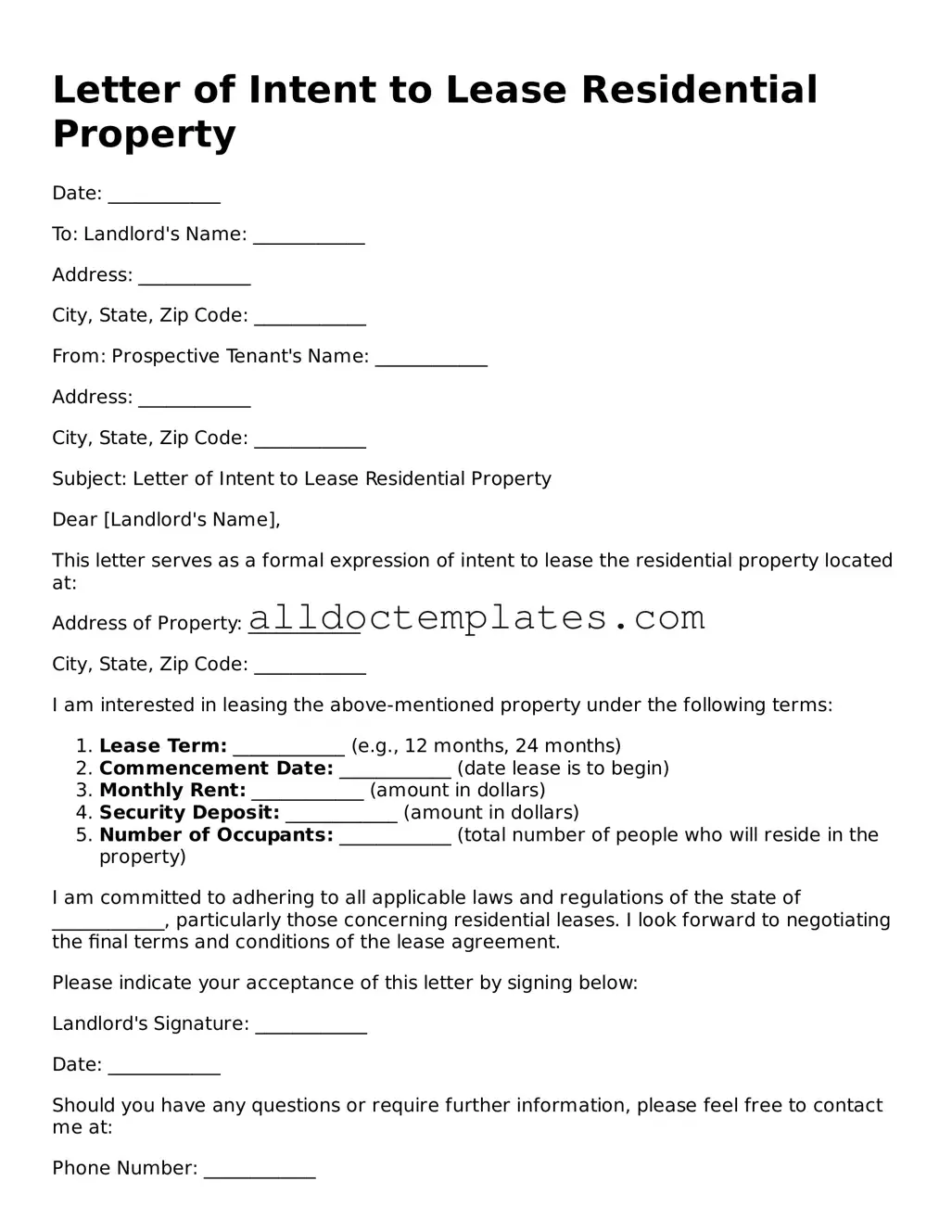Letter of Intent to Lease Residential Property
Date: ____________
To: Landlord's Name: ____________
Address: ____________
City, State, Zip Code: ____________
From: Prospective Tenant's Name: ____________
Address: ____________
City, State, Zip Code: ____________
Subject: Letter of Intent to Lease Residential Property
Dear [Landlord's Name],
This letter serves as a formal expression of intent to lease the residential property located at:
Address of Property: ____________
City, State, Zip Code: ____________
I am interested in leasing the above-mentioned property under the following terms:
- Lease Term: ____________ (e.g., 12 months, 24 months)
- Commencement Date: ____________ (date lease is to begin)
- Monthly Rent: ____________ (amount in dollars)
- Security Deposit: ____________ (amount in dollars)
- Number of Occupants: ____________ (total number of people who will reside in the property)
I am committed to adhering to all applicable laws and regulations of the state of ____________, particularly those concerning residential leases. I look forward to negotiating the final terms and conditions of the lease agreement.
Please indicate your acceptance of this letter by signing below:
Landlord's Signature: ____________
Date: ____________
Should you have any questions or require further information, please feel free to contact me at:
Phone Number: ____________
Email Address: ____________
Thank you for considering my intent to lease your property. I hope to receive your favorable response soon.
Sincerely,
______________________________
Prospective Tenant's Name: ____________
